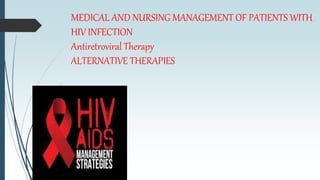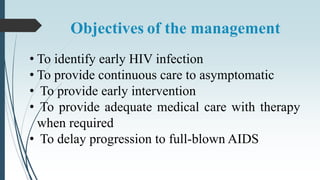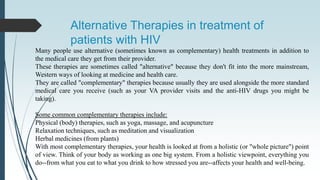This document provides information on the medical and nursing management of patients with HIV infection. It discusses the objectives of management which include early identification of HIV, continuous care of asymptomatic patients, early intervention, adequate medical care and therapy, and delaying progression to AIDS. The medical management is described in stages from asymptomatic to AIDS-related illnesses. Key aspects of management include risk assessment, establishing diagnosis, determining stage, laboratory tests, initiating antiretroviral therapy and PCP prophylaxis. Nursing management focuses on health education, universal precautions, and prevention. Alternative therapies discussed for treatment include physical therapies like yoga and massage, relaxation techniques, and herbal medicines.

























